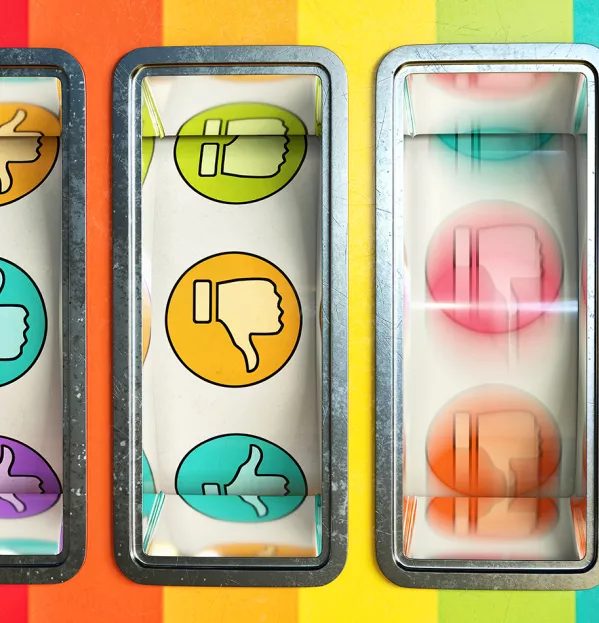- Home
- Teaching & Learning
- Secondary
- How I give assessment feedback that really counts
How I give assessment feedback that really counts

How do you plan to provide feedback on assessments this term?
If you observed my classroom a few years ago, you would have seen me hand students back their papers with grades written on the front, and then spend an entire lesson talking through the test, expecting my students to listen attentively, make corrections and then learn from their mistakes.
This didn’t work out. The students who scored highly thought it was a waste of time; they got bored, switched off and misbehaved. The students with low scores were downhearted and overwhelmed. Teaching was rushed, technique was overlooked and subsequent tests indicated these feedback lessons had very little positive impact.
Today, things look very different. My feedback sessions are now purposeful, personalised and motivating. Here’s how they work.
1. Highlight personal progress
When grades were written on the front cover, students used this to define themselves and they spent the whole lesson comparing grades with their classmates.
Now, I use a coloured dot on the front page instead of a grade to show students where they are in relation to their expected progress - blue for above, green for on, amber for slightly below and red for significantly below.
As a result, rather than comparing scores, students began to compare colours. It might be that two students with very different grades both received a blue or a green; this approach is about their own progress against their target grade. They know that every single pupil is capable of getting greens and blues; it has massively boosted morale and motivation to make more progress.
Read more:
- How to establish positive revision habits
- Messy marking: a new approach to feedback
- Why we’re still getting feedback wrong
2. Make feedback focused
I make short screencasts reviewing each question - a video recording of my screen, audio and camera while I go through the question, using visual aids to support the explanation of the answer.
While marking the assessment I make notes on what to include in the screencasts, and then it usually takes me an hour or two to prepare these for an entire 60-minute test. Sometimes I focus more on the content or the exam technique, but most explanations will be supported by questioning and diagrams to scaffold student understanding.
When assessments are returned, students colour-code their answers to be red, amber or green, depending on their level of confidence in that question. They then choose the two or three red or amber questions and watch the corresponding screencasts with their headphones in.
Afterwards, they complete a short task to consolidate and apply the skills and/or knowledge encompassed in the screencast. This might be a similar exam question, a matching activity or a diagram to explain.
Students can pause and rewind the screencast, focusing on the areas that will have the biggest impact for them, rather than trying to spread themselves too thin over the whole paper, which helps them to remain engaged, focused and productive.
The downside is the time needed to prepare the screencasts, but it is sometimes possible to reuse the resources in the future, split the workload between colleagues or even get students involved in making the recordings.
3. Factor in one-to-one conversations
While students individually pause and re-watch the screencast, I have time to have one-to-one conversations to clarify, praise, discuss possible targets, and give students the space to air their concerns and thoughts.
As well as keeping my students focused on the purpose of the lesson, these individual conversations have been really important in helping me to build trust and rapport with my students.
4. Give students time to reflect and plan
At the end of the feedback lesson, I give students a selection of reflection questions to choose from. For example, “Name three ways in which you have made progress in your learning today” and “What will you do differently when you prepare for your next assessment?”
Providing a choice of questions helps to scaffold and make reflection more accessible from a student perspective.
These reflection questions will then lead into the final task of the lesson, which is to get students to write down a single SMART target - a target that is specific, measurable, actionable, realistic and can be completed within a defined time.
Left unsupported, students will often come up with targets along the lines of “work harder”, “do more revision” or “focus better in the lesson”, and so it is important to talk through the components of a SMART target, give examples and encourage students to think about the one-to-one conversation they had with you.
The first time I talk through SMART targets with a class I factor in at least 10 minutes for this, but as students become familiar with the components of these targets, this final step becomes much faster.
This lesson model is still a work in progress, but so far it really has had a positive impact. So, why not try it for yourself with your first assessment feedback of the new school year?
Hannah Bradley is a science teacher at an international school in Portugal. She tweets @HannahBradley_9
You need a Tes subscription to read this article
Subscribe now to read this article and get other subscriber-only content:
- Unlimited access to all Tes magazine content
- Exclusive subscriber-only stories
- Award-winning email newsletters
Already a subscriber? Log in
You need a subscription to read this article
Subscribe now to read this article and get other subscriber-only content, including:
- Unlimited access to all Tes magazine content
- Exclusive subscriber-only stories
- Award-winning email newsletters



